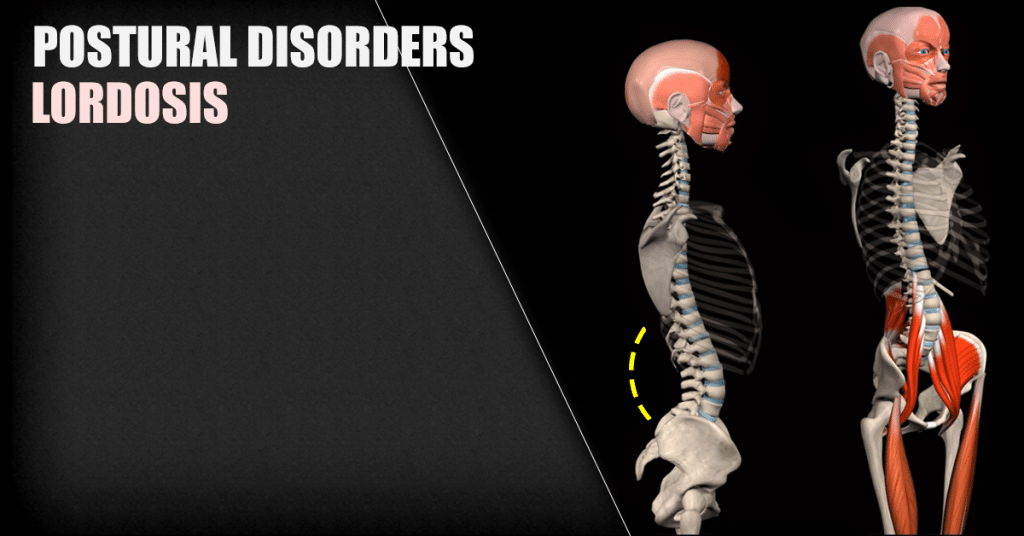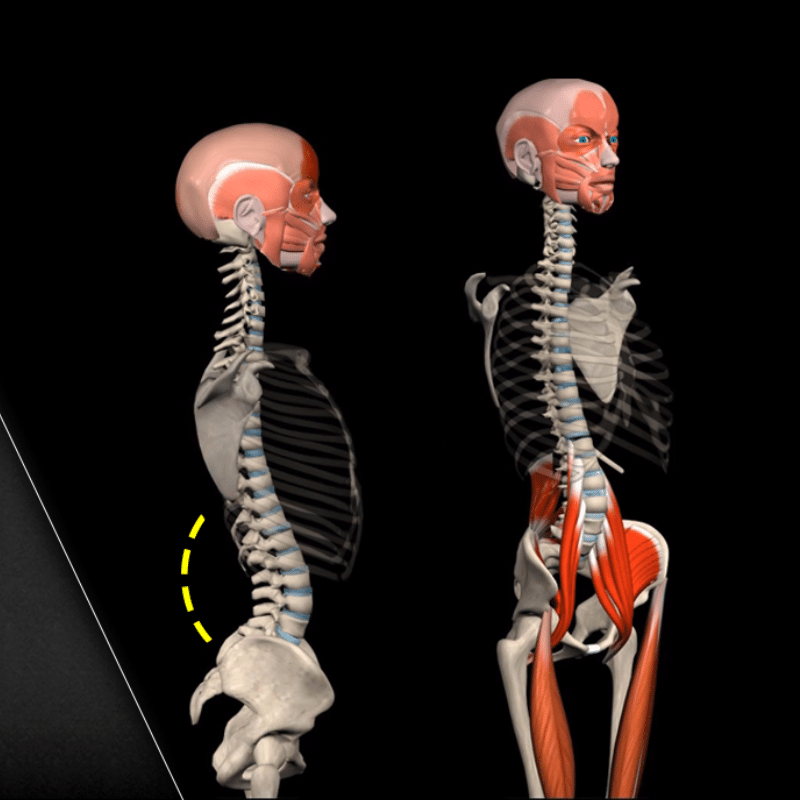In this detailed Muscle and Motion article, you will gain a comprehensive understanding of lordosis and explore effective ways to diagnose and treat this condition conservatively.

What is Lordosis?
Lordotic position refers to an abnormal inward curvature of the lumbar spine, resulting in an exaggerated arch in the lower back.
Usually, there is a slight to moderate lordosis in the lumbar vertebrae (L1-5) with a slight anterior pelvic tilt. The lumbosacral angle, which is the angle between the lumbar vertebrae (L5-S1) and the pelvis, is typically around 40 degrees.
However, in a deformed condition of lordosis, there is a prominent concavity in the lumbar vertebrae, an increased anterior pelvic tilt, and often an increased lumbosacral angle.
The lumbosacral angle plays a significant role in lordosis. An angle greater than the norm indicates increased lordosis, while an angle less than the norm indicated reduced lumbar lordosis and is characteristic of a flat back.
What Causes Lordosis?
Lordotic posture can be caused by various factors, including:
- Lack of muscular balance:
Imbalances in muscle tension can contribute to an anterior pelvic tilt, leading to a lordotic position. Tense muscles, such as the iliopsoas, rectus femoris, and quadratus lumborum, can cause an anterior pelvic tilt, while weak muscles can result in a posterior pelvic tilt.
- Particularly weak abdominal muscles:
Insufficient strength in the abdominal muscles can contribute to an imbalance in pelvic alignment and increase the likelihood of lordotic posture. The gluteus maximus and hamstrings should also be considered for their role in pelvic stability.
- Genetic or acquired structural changes:
Some individuals may have structural abnormalities in the lumbar vertebrae, such as spondylolysis, spondylolisthesis, and spinal stenosis, contributing to a lordotic posture.
- Faulty movement patterns and lack of body awareness:
Poor movement habits and a lack of body awareness can contribute to adopting a lordotic posture.
- Chain reactions in the lower extremities:
Abnormalities in the lower extremities, such as hyperextension of the knees, can create a chain reaction of compensatory adjustments in the spine and pelvis, potentially leading to a lordotic posture.
How to Diagnose Lordosis?
During a physical examination, you should check and assess the spine curvatures in various positions, such as: laying down, standing, sitting, or bending. After you establish the patient has lumbar lordosis, you should check which is the underlying cause of the condition, including muscle weakness or shortness, vertebral deformities and more. X-rays or other imaging tests may also be performed to measure the degree of curvature and rule out other underlying conditions.
Common Characteristics of Lordosis:
- Exaggerated curvature of the lumbar spine.
- Protruding abdomen and buttocks.
- Anterior pelvic tilt.
- Tight hip flexor muscles.
- Weak abdominal muscles.
- Limited mobility in the lumbar spine.
- Potential discomfort or pain in the lower back.
Treatment of Lordosis:
The treatment approach for lordosis depends on the underlying cause and the physical findings observed during the examination. It typically involves targeting weak muscles for strengthening and stretching shortened muscles to alleviate pain and improve functionality. While exercises cannot fix lordosis, research has indicated their effectiveness in relieving pain and enhancing overall function.
To enhance your understanding of physical assessment for lordosis and other postural disorders, as well as improve your ability to provide effective treatment to your clients, we suggest exploring our Posture APP.
Our Posture APP provides detailed instructions on each test and offers practical insights for their implementation in your professional setting.
At Muscle and Motion, we believe that good posture is essential for your long-term health and well-being. Our Posture App can help you improve your posture and reduce pain. Sign up for free today!
Written by Uriah Turkel, Physical Therapist and Content Creator at Muscle and Motion.
And Dr. Gill Solberg, “Muscle and Motion” Posture & Yoga apps Co-Founder


